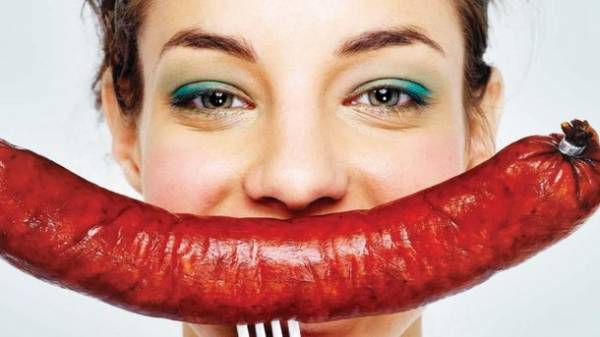
OUR EXPERTS:
- Lyudmila Denisenko, nutritionist, member of the European Association for the study of obesity
- Julia Sharupich, cardiologist KNP “CDC Shevchenko district”
- Natalia Shamalo, family doctor clinic KNP “CPSD No. 2” Darnytsa district of Kiev
MYTH 1: THE EXCESS CHOLESTEROL IN THE DIET IS DANGEROUS
Of course, it is better not to test the strength of your liver — cholesterol foods, by definition, also a fat. And the kidneys will suffer from excess protein foods that are also a source of cholesterol.
But! The main thing is, and the fact that actually 80% of the liver produces cholesterol itself, and only 20% it takes from food. Therefore, the increase in the level of cholesterol in the blood is primarily the handiwork of an unhealthy liver. And need to diagnose, and if necessary to adjust precisely its function.
MYTH 2: DANGEROUS PRODUCTS SHOULD BE REMOVED
As they say, there is no cholesterol — no problem. Why fooling, calculating, ate acceptable dose, if you can just go to a priori useful unrefined vegetable oils?
But! The cholesterol in the body is actually very fit: he uses it in the synthesis of many hormones and vitamin D; during and after inflammatory diseases; cholesterol is responsible for the absorption of such fat soluble vitamins as A, E, D, K; it plays an important role in the functioning of the nervous and immune systems; participates in normal gelceutical, and crucial for growth.
MYTH 3: THE EXCESS OF CHOLESTEROL IS TO BLAME FOR OBESITY
In fact, the emergence of excess weight gain and increased cholesterol levels — a completely independent state.
The other thing is that often obesity and hypercholesterolemia occur simultaneously. But just because these problems have a number of common provocateurs leading to their emergence. This, in particular, the unhealthy state of the intestinal flora and excess technologically processed products in the diet. Remove the instigators and health status improve, and the weight slowly starts to go away.
MYTH 4: FRUITS AND VEGETABLES DERIVE IT FROM THE BODY
The assertion that cellulose and pectin holds the molecules of cholesterol, and then this “insoluble complex” is displayed, — folklore. Another thing that fruits and vegetables improve metabolism and make the digestive tract, particularly the liver and intestines, and therefore heals the whole body. This process is, however, slow: you need the daily use of 300 g of vegetables and fruits, and as much as 6-12 months.
MYTH 5: HYPERCHOLESTEROLEMIA SKINNY FOLK ARE NOT THREATENED
Intestinal health depends on the quality of food, and it can limp people have with any weight. And most importantly: high cholesterol can be written in the genes, i.e. to be innate. And change the genetic code of the medicine can not, at least for now.
MYTH 6: CHOLESTEROL — THE ROAD TO ATHEROSCLEROSIS
Cholesterol performs another important function: when damage to blood vessels he participates in their “patching”. Over time, the body caliciviral this “patch”, so she wasn’t moving and certainly and certainly rescued the damaged vessels. So there is atherosclerotic plaque. But not cholesterol to blame for her education, and “corruption” of blood vessels, which occurs in particular due to inflammatory processes in them — caused, in particular, bacteria and viruses.
MYTH 7: SMOKING DOES NOT LEAD TO THE FORMATION OF PLAQUES
To harm cholesterol begins, if the vessel ill. And Smoking them it really does. Because 90% of cigarette smoke is carbon monoxide, and 10% toxic fumes and impurities, which in every cigarette, nearly 4000! In particular, acetone, lead, arsenic, formaldehyde. Regular intake of toxic substances causes inflammation and the destruction of the internal lining of blood vessels.
MYTH 8: THE RISE — A VERY DISTURBING SYMPTOM
If not significantly, no. Don’t panic when a greater figure of 5.52 mmol/L. Even 6,99 men and women of 6.53 — the maximum allowable norm (40-45 years). The importance of “good” (it should be above 1.6 mmol/l, in the analysis of HDL (high density lipoproteins) and “bad” (lower than 2.6, LPOP and VLDL — low and very low) cholesterol. They just may not fit the norm, even with normal total cholesterol.
MYTH 9: ALCOHOL REDUCES IT LEVEL IN THE BLOOD
Yes, alcohol is capable of dissolving the “bad” cholesterol, and the liver — take him. But to reduce cholesterol alcohol may not be greater than 3% (the reduction is described as very difficult) and only at the dose of 20 ml ethanol per day. This is 50 ml of vodka or cognac, or 180-200 ml of dry wine, depending on variety. But the abuse of alcohol, the amount of cholesterol in the blood as the time increases due to the disorders of the liver.
MYTH 10: SAVE THE DRUGS
Yes, the drugs (on the basis of fibroevoy acid; statins; supplements: omega-3 fatty acids, lecithin, and lipoic acid) interfere with the mechanism of production of body cholesterol and reduces its level. But in a non-existent harm of the cholesterol we already have. But artificial reduction of its level in the blood is fraught with failure of the whole cascade of important processes. In addition, in response to such an attack over time, the body will start more production of cholesterol.
Thus, the drugs only make the situation worse. They are vital only in diseases of those organs, in the processes of functioning of which cholesterol is involved. But please note: it is not the root cause of the destruction of these bodies. Is: kidney diseases and hypertension; severe atherosclerosis; the period after operations on the heart and blood vessels after a heart attack or stroke; inherited disorder of cholesterol metabolism.
But even if the list of violations did you see his disease — in no case do not succumb to the advertising of drugs, which attack us through the media. First you need to see a doctor and cure these diseases. And then the level of cholesterol certainly to reduce don’t have (drugs your doctor may prescribe only as a temporary measure until it is eradicated, the real reason for the increase in cholesterol, and — not always).
Only one exception need a lifetime of medication — hypercholesterolemia, caused by genetic breakdowns that occurred during the formation of the person in the womb.






